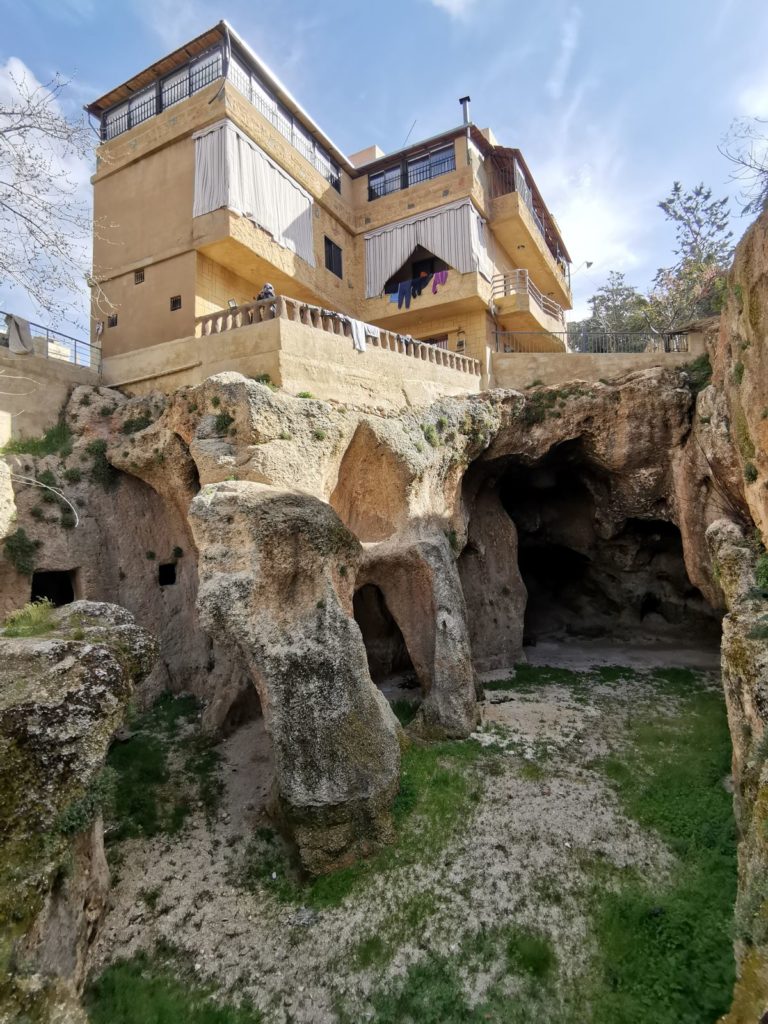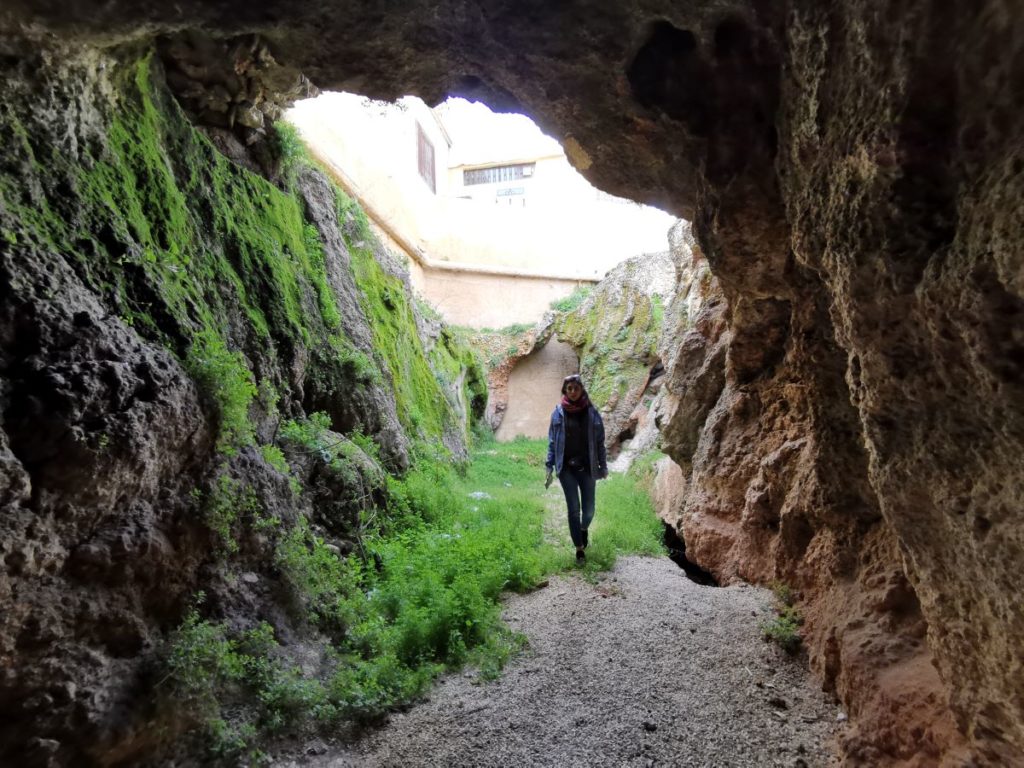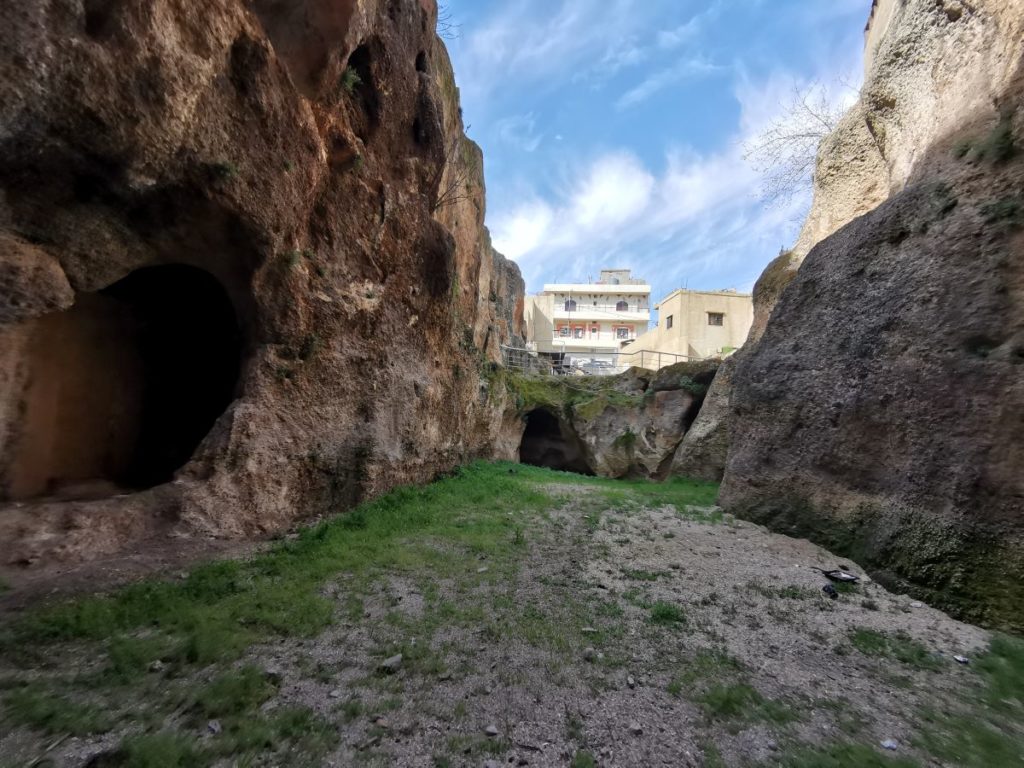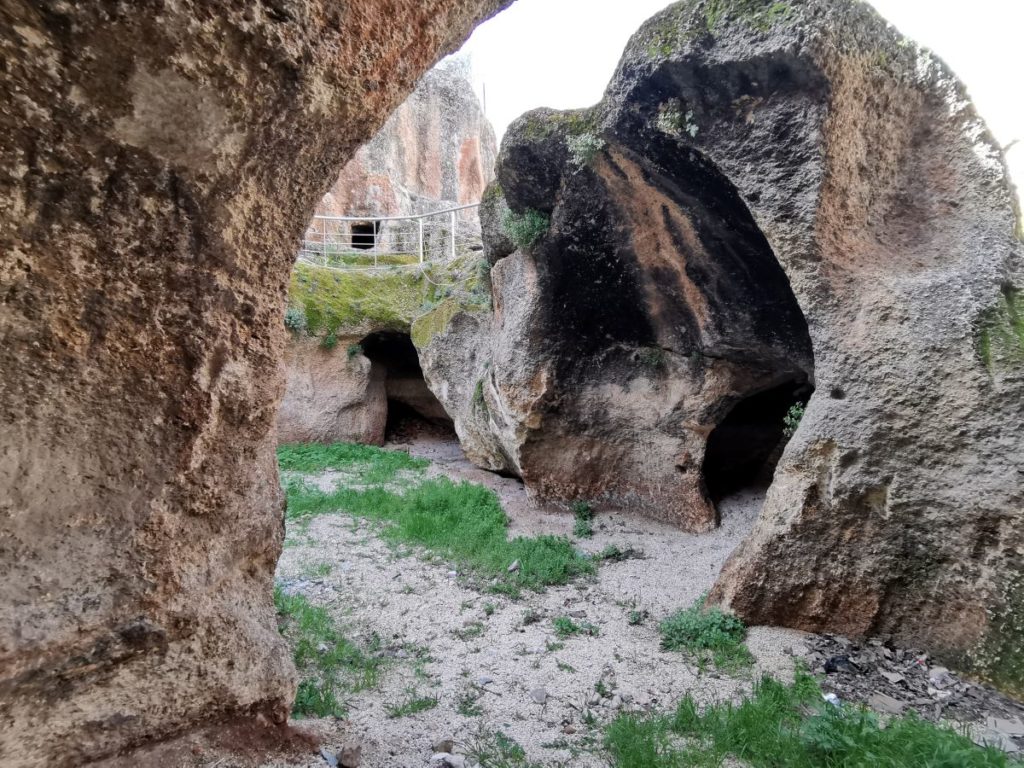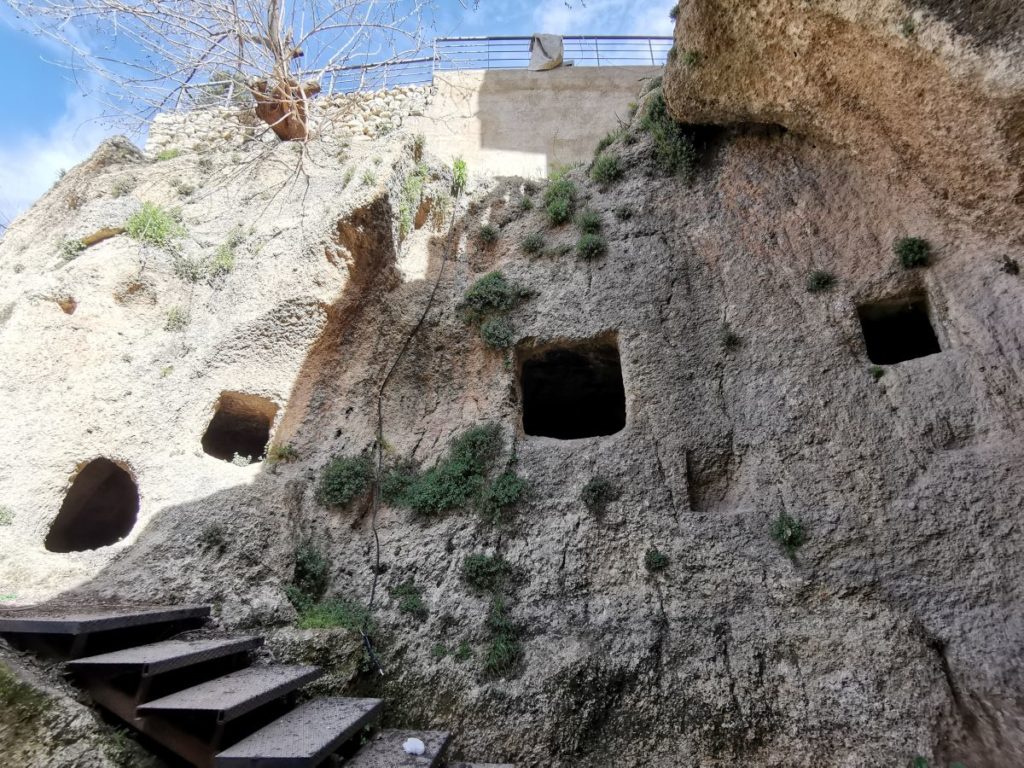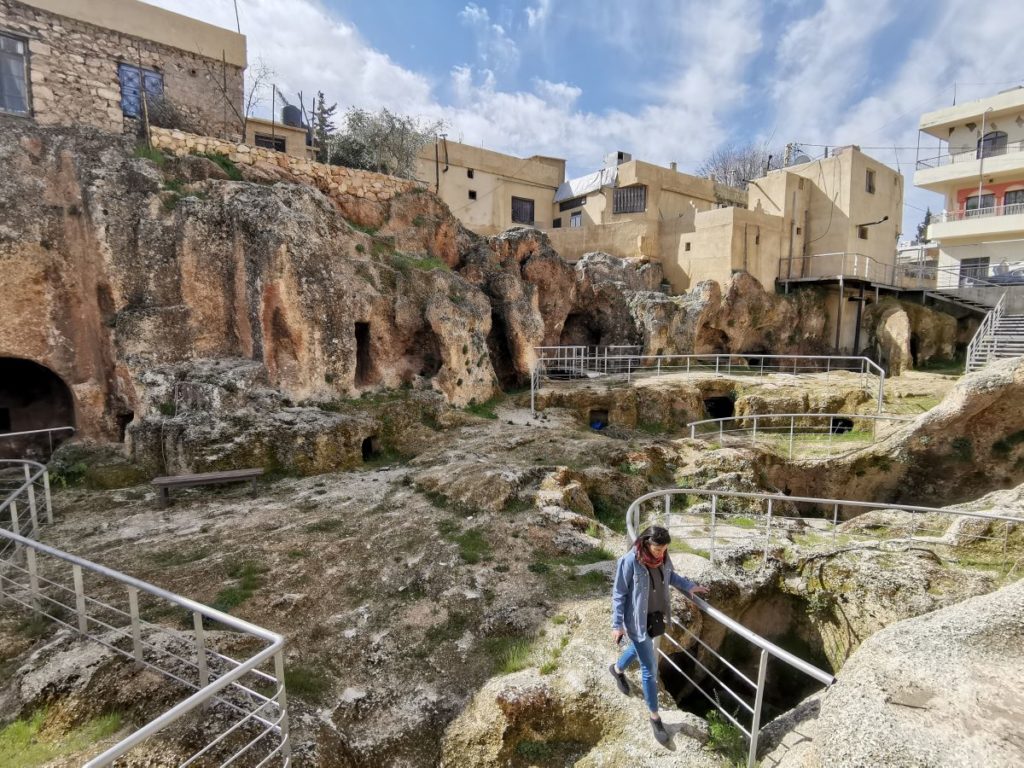Baalbek holds an important, yet underrated quarry that dates back to the pre-roman era, known as Moghr El Taheen.
Toponym
Moghr (Cave) El (of) Taheen (Flour), the cave is associated with flour because of its fragile limestone material.
This appellation has been used by the locals for many years.
Structure
Mogher El-Taheen has been considered an important archaeological site since the beginning of the 20th Century, owing to the photographs taken by German expert Todor Vigan that showed a quarry devoid of any construction.
The site, which surface crumbled due to natural factors, consists of a series of inter-connected caves and tunnels of interesting geological shapes, along with the presence of several doors, basements, storage vaults and rock-cut cemeteries.
The site was a quarry that served for the extraction of stones during antiquity. The remains of some extraction channels are still visible, along with some holes dug in the rock used to facilitate the transfer of stone chunks.
During the Roman era, the site was used as a cemetery – an Arcosolia – whereby the dead are buried under rock-carved arches, in rocky ornamental sarcophagi or coffins made of perishable materials.
Rehabilitation
As part of a project led by UN-Habitat and funded by the Italian Agency for Development Cooperation in partnership with Baalbek Municipality, DGA and the Lebanese Association for Coexistence and Development, the site was rehabilitated to become a touristic historical site and a shared public space by the neighborhood’s residents.
Scroll down to enjoy the pictures and to locate the site on the map.
Karim Sokhn
Tour Operator & Tour Guide
References:
https://bekaa.com/2019/07/15/baalbeck-moghr-tahin/
https://unhabitat.org/un-habitat-gives-life-back-to-mogher-tehine
